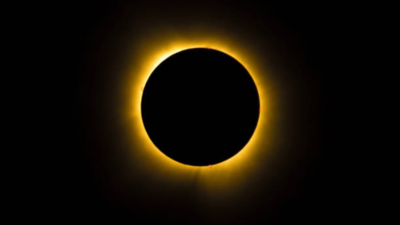Trending
Solar eclipse 2024 date and time: When is Surya Grahan in October? Will it be visible in India?
A unique 'ring of fire' solar eclipse is set to occur on October 2, 2024, due to the Moon passing between the Earth and Sun at its farthest point. This phenomenon won't be visible in India but can be observed in parts of South America and other regions. Viewing precautions should be taken to prevent eye damage.

This solar eclipse is being popularly called the "ring of fire". This annular solar eclipse happens when the Moon passes between the Sun and Earth while it is at its farthest point from Earth.

So, at what time will the solar eclipse start? As per the Indian Standard Time, it will occur at 9.12 pm and it will end at 3.17pm.
Will the solar eclipse be visible to India?
Specifically, the annular solar eclipse will be visible in parts of Argentina and Chile. The partial solar eclipse will be visible in all or parts of American Samoa, Antarctica, Argentina, Baker Island, U.S. Minor Outlying Islands, Brazil, Chile, Christmas Island, Clipperton Island, Cook Islands, Falkland Islands, Fiji,
French Polynesia, Hawaii USA, Mexico, New Zealand, Niue, Palmyra Atoll U.S. Minor Outlying Islands, Paraguay, Pitcairn Islands, Samoa, South Georgia and South Sandwich Islands, Tokelau, Tonga, Tuvalu, Uruguay, Wallis and Futuna.
As per Space, the moon's shadow during the solar eclipse will move faster than the speed of a fighter jet. "The moon's shadow will appear to travel at vastly different speeds depending on your location. In some places, it will move faster than 6 million mph (10 million km/h); in others, it will travel as slow as 1,278 mph (2,057 km/h), or about the speed of a fighter jet."
Is it safe to see the Sun during a solar eclipse even when the eclipse is not visible to your area?
However, when the eclipse is not visible in your locality, you may not need special solar viewing glasses or filters; however, other precautions must be taken if you are observing the Sun. Never look at the Sun directly as it can damage your eyes. The Sun should be viewed through specialized solar filters, eclipse glasses, or indirectly through pinhole projectors.
Precautions to take during solar eclipse
It's also important to supervise children closely, ensuring they use protective eyewear when viewing the eclipse. If you plan to take photos, use a solar filter for your camera or telescope to avoid damaging the equipment and your eyes. In some regions, temperature drops may occur, so it's wise to have appropriate clothing. Remember, safety comes first during a solar eclipse to avoid long-term eye injury or other hazards.
When is the next solar eclipse?
A total solar eclipse will occur on August 12, 2026. The total solar eclipse will be visible in Greenland, Iceland, Spain, Russia, and a small area of Portugal, while a partial eclipse will be visible in Europe, Africa, North America, the Atlantic Ocean, Arctic Ocean, and Pacific Ocean.
End of Article
FOLLOW US ON SOCIAL MEDIA









